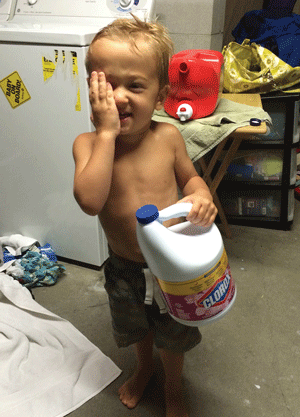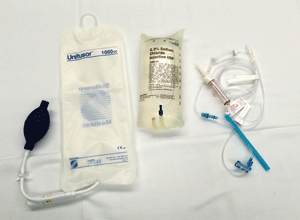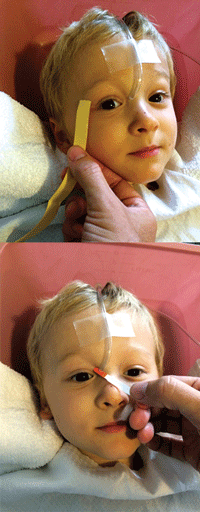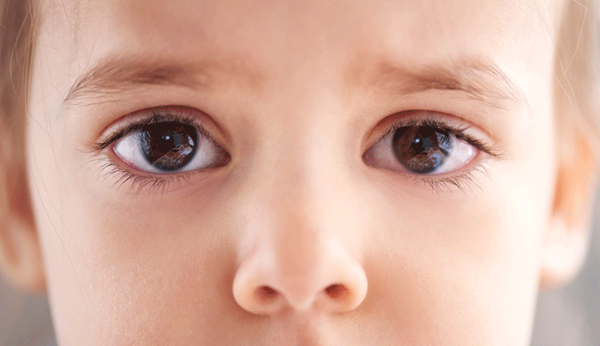
A 3-year-old boy presents with his frantic parents after spilling bleach in his right eye 20 minutes prior to arrival while playing in the laundry room. Parents did not attempt irrigation at home but instead brought him immediately to the emergency department for further evaluation. The child is hysterical and appears to be in excruciating pain. You know that chemical burns, particularly alkaline burns, represent a true ophthalmologic emergency. You also recognize that immediate copious irrigation remains the single most important therapy for chemical ocular injuries. However, you are concerned that you will not be able to effectively examine and treat this distraught pediatric patient.
What's the best way to approach pediatric ocular burn patients?

Control the pain
Intranasal versed or fentanyl are quick, non-invasive, and effective options for anxiolysis and analgesia. Intranasal versed is dosed at 0.3 to 0.5 mg/kg. Intranasal fentanyl, which can be as effective as IV morphine, is dosed at 1.5 mcg/kg, with repeat dosing of 0.5-1.5 mcg/kg every 15 minutes, and is best used in patients over 3 years of age. Proparacaine 0.5% may also be necessary to assist with analgesia. Two drops on the medial canthus should prompt enough blinking to properly coat the eye.
Create a superhero
Make a cape with a pillow case, shears, and a sharpie. Using trauma shears, cut a hole slightly larger than the size of the patient's head. Place the “cape” over the child's head and ensure their arms are at their side. Cut a half-circle out of the short side of a traditional basin and line the cut edge with a towel, creating a cushion for the neck. The child may then place their head in the basin to catch the runoff from the irrigation.

Start the Flood
Good luck getting a Morgan lens on this patient. Instead, obtain a 1 liter bag of normal saline and pop in some IV tubing. Place the saline in a pressurized bag, and cut the distal portion of the tubing so that it will be running completely unimpeded. Tape the tubing just above the medial canthus of the affected eye and allow the fluid to run over the eye and into a basin. Use as much saline as necessary to achieve optimal pH. Enroll the parents to ensure the child's eyes are not shut tightly during this process.
Assess the pH
Checking pH is easy using this set up. Since the normal saline solution is already running across the eye medial to lateral, simply place the pH paper adjacent to the lateral canthus in order to catch a few drops. Continue irrigation until the pH drops to a normal range (6.5-7.5). Remember to also check the pH of the unaffected eye for comparison.
Host a Rave
After irrigation, proceed with the rest of your ophthalmologic examination. When assessing for corneal abrasions and burns, simply place the fluorescein paper directly into the stream of irrigation medially. From there, use a handheld blacklight so the patient does not require any positional changes. Don't forget your glow sticks.
At a minimum, patients with mild chemical injuries should have follow-up care arranged with an ophthalmologist and medical therapy geared toward promoting healing, preventing infection, and controlling pain. Of course, any patient with a more serious injury should be immediately evaluated by a specialist in the emergent setting.



